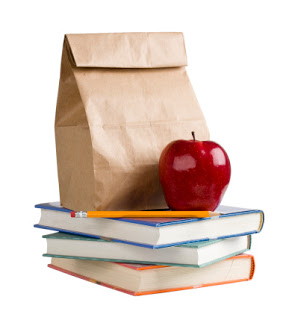School vending machines across the nation will soon be receiving nutritional makeovers. That’s because the U.S. Department of Agriculture (USDA), which establishes nutritional standards for schools receiving federal funds to help pay for meals, is banning the sale of unhealthy food options that do not meet new nutritional limits.
The new guidelines, announced last week as part of the USDA’s ‘Smart Snacks in School’ initiative, will go into effect at the start of the 2014-2015 school year and will set restrictions for food sold in vending machines, snack bars and a la carte lines. Popular snacking treats and carbonated beverages high in calories, fats, sodium and sugars will be swapped out for healthier alternatives like granola bars, low-fat chips, fat-free milk and 100 percent fruit or vegetable juice.
While the new law will not interfere with meals brought from home (i.e. lunchboxes, bake sales, classroom treats for holiday and birthday celebrations, etc.), it will have a direct impact on the meal choices available to kids during the school day.
Experts from the Nutrition and Dietetics Program of the University of Pittsburgh School of Health and Rehabilitation Services (SHRS) gave us the facts on what this new regulation will mean for kid’s health.
Why is the USDA now taking action to curb unhealthy food options available during the school day?
The reality of the situation is that kids spend a lot of their waking day in school and in after-school activities. For some children, having snacks during the school day is critical to maintaining energy levels to learn and stay focused in the classroom and during extracurricular activities. Like adults, when the need or the drive comes to refuel, the closest or most affordable/appealing beverage or food item hits the mark.
Making the food environment supportive of good nutrition by health-wise control of the choices makes absolute sense. In fact, it’s something that registered dietitians, school food service directors, school nurses and parents have already been working toward. With regard to competitive foods, many schools have already implemented wellness policies similar to what the USDA is now authorizing.
What are “competitive foods” and why is the USDA specifically targeting these foods?
Essentially, competitive foods are those foods sold during a meal time that “compete” for dollars and calories with more healthful options. Sugary or caffeinated beverages like soda are in direct competition with healthier alternatives such as 100 percent fruit juice, water and milk that are already in place in regular school meals.
Setting limits for calories, fats, sugar and sodium in competitive food products ensures that kids are selecting from food groups that provide greater nutrient density.
Q: Are the new rules enough? Is this a step in the right direction for obesity prevention and other chronic illnesses?
The new rules are the first step, but unfortunately fall short. The interim rules do not apply to foods sold at after-school fundraisers, sporting events, concession stands or meals that are served at holiday parties and celebrations or packed in kid’s lunch boxes. As a result, there are still plenty of opportunities for these less healthy snacks and meals to be available for children.
Q: What does this mean for kid’s health?
This new regulation can mean kids get exposed to new alternatives and healthier choices that support mental and physical performance. Although this is a much needed step, the choices have to go beyond what is available in school. Ultimately, if we expect our kids to embrace the concept of eating healthy, we as educators, parents and caregivers need to set a better example.
Looking for ideas on healthy lunches, snacks and celebratory occasions like birthday parties and athletic events? Email the nutrition experts at SHRS at Nutrition@shrs.pitt.edu.
Learn more about the Smart Snacks in School initiative by watching the USDA video on YouTube.








